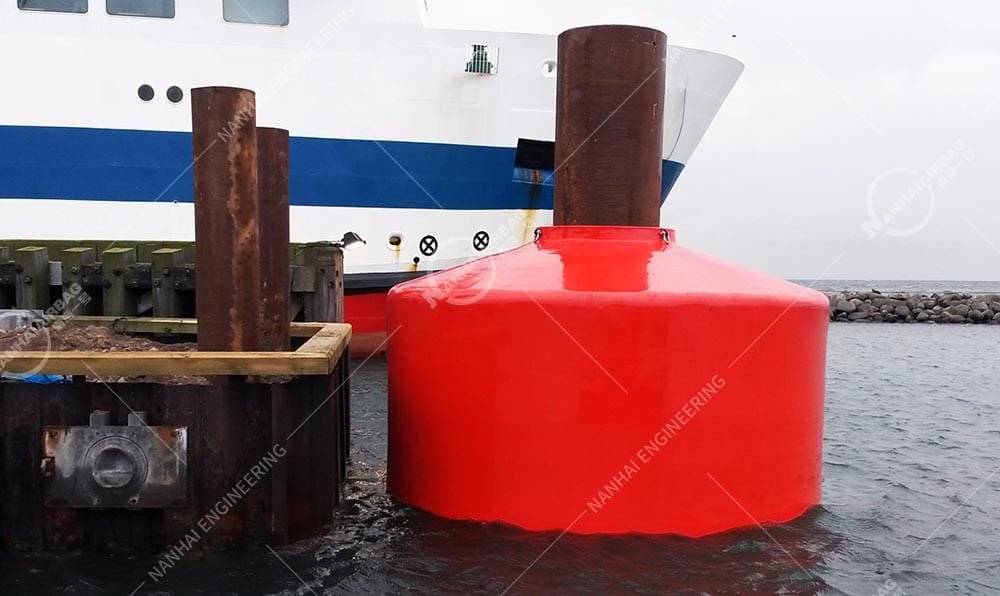Maintenance Tips to Extend the Life of Your Monopile Donut Fender
07/01/2025Cell Fenders vs. Pneumatic Fenders: Which One Is Right for You?
07/01/2025Why Choose Donut Fenders for Monopile Protection Systems?
Imagine a ferry navigating a tight, winding channel bordered by towering monopile structures. Now picture a bright, floating collar rotating effortlessly as the tide changes, cushioning every bump and keeping both ship and structure safe. That’s the beauty of donut fenders—and why NANHAI champions them for marine protection.
Why This Matters Now
Ports and offshore platforms are evolving fast—larger vessels, tighter berths, extreme tides, and rising safety standards. One scratch on a monopile or ship hull can mean costly repairs, operational delays, or even environmental damage. For example, a harbor in Guangdong recently experienced a scheduling holdup when a vessel clipped a pier, just because there wasn’t enough buffer or flexibility.
That’s what makes donut fenders urgent. Easily customized, they float and rotate with both tide and ship, perfect for corner protection or narrow waterways where traditional blunt buffers just don’t suffice.

Donut fenders
What are donut fenders?
Donut fenders are foam-filled, floating collars that slip over steel monopiles, rotating freely and rising and falling with tides—perfect for energy absorption and hull-friendly berthing.
Why use donut fenders at port corners and narrow channels?
They’re ideal for guiding vessels through tight maneuvers—floating, turning, and cushioning impacts right where turns happen.
Can color help in marine contexts?
Yes! Bright custom colors serve as visual directives for pilots and captains, improving safety in congested or low-visibility situations.
Advantages of Donut Fenders
- Energy Absorption Meets Smart Design. Donut fenders combine closed-cell foam cores, low-friction bearing skins, and a rotational design, absorbing shocks without stressing the structure. They also float to stay in the correct position.
- Hull-Safe, Easy on Maintenance. A non-marking urethane exterior reinforced with nylon protects ship hulls while staying resistant to salt, UV, and abrasion. No pressure valves to worry about—just occasional inspections and you’re good.
- Self-adjusting and Tide-ready. These fenders rise and fall with the tide and rotate with vessel movement, preventing shear damage and maintaining consistent protection even in high tidal range.
- Customizable, Colorful, Communicative. NANHAI can tailor every donut fender—size, buoyancy, counterweights, mooring crowns, and even vibrant colors to signal navigational guidance, enhance safety, and reflect your brand.
Detailed Benefits for NANHAI’s Customers
| Feature | Why It Matters |
|---|---|
| Rotational & Vertical Motion | Keeps the fender correctly aligned in tight corners or narrow channels, greatly reducing shear forces. |
| High Energy, Low Reaction | Soft, progressive absorption protects assets without rebound damage—ideal for sensitive or luxury vessels. |
| Durable Materials | Closed-cell foam resists water ingress; polyurethane skin resists corrosion and doesn’t stain hulls. |
| Custom Colors | Enhance navigation safety—red for starboard curves, yellow for caution zones, or your brand’s hues. |
| Minimal Maintenance | No valves to check, low friction leads to fewer parts wearing out—cut lifecycle costs. |
FAQ
What’s the difference between donut fenders and cylindrical fenders?
Donut fenders float around the pile, rotate, and adjust vertically—ideal for dynamic berths—while cylindrical fenders are fixed and best for straight quay walls.
How do you install a donut fender on a monopile?
Simply lift it over a pre-mounted steel monopile with a crane using lifting eyes; it self-aligns for rotation and tide adjustments.
Are donut fenders maintenance-heavy?
Not at all. They rarely need servicing—just occasional checks for debris and bearing wear, thanks to their low-maintenance design.
Can I request custom flotation or colors?
Absolutely. NANHAI can customize buoyancy tanks, counterweights, protective netting, and choose any bright color to meet your port’s safety and visibility needs.
Are donut fenders suitable for high tidal ranges?
Yes—they’re specifically built for big tidal swings, maintaining consistent contact and protection throughout the cycle.
Why NANHAI’s Donut Fenders Stand Out
At NANHAI, we don’t just sell marine fenders and ship fenders—we engineer solutions that fit your port’s profile:
- Full custom design (diameter, buoyancy, counterweights)
- Durable, non-marking polyurethane skins
- Vibrant color options as visual guidance
- Fast installation on monopiles, with minimal upkeep
- Perfect for corners, narrow waterways, and bridges
Conclusion
In short: Donut fenders are floating, rotating shields tailor-made for monopile protection, especially in complex, narrow waterways and corner berths. They combine marine-grade resilience, smart safety signaling, and cost-efficient operation.
For ports, ferry terminals, offshore platforms, and tight-turn berths, NANHAI’s donut fenders are the optimal blend of protection and performance. Want to boost safety, lower lifecycle costs, and stand out visually? Your solution is a smart, vibrant donut fender from NANHAI.
Curious how they could look in your port? Let’s talk custom design, color options, and layout scenarios—reach out today!
